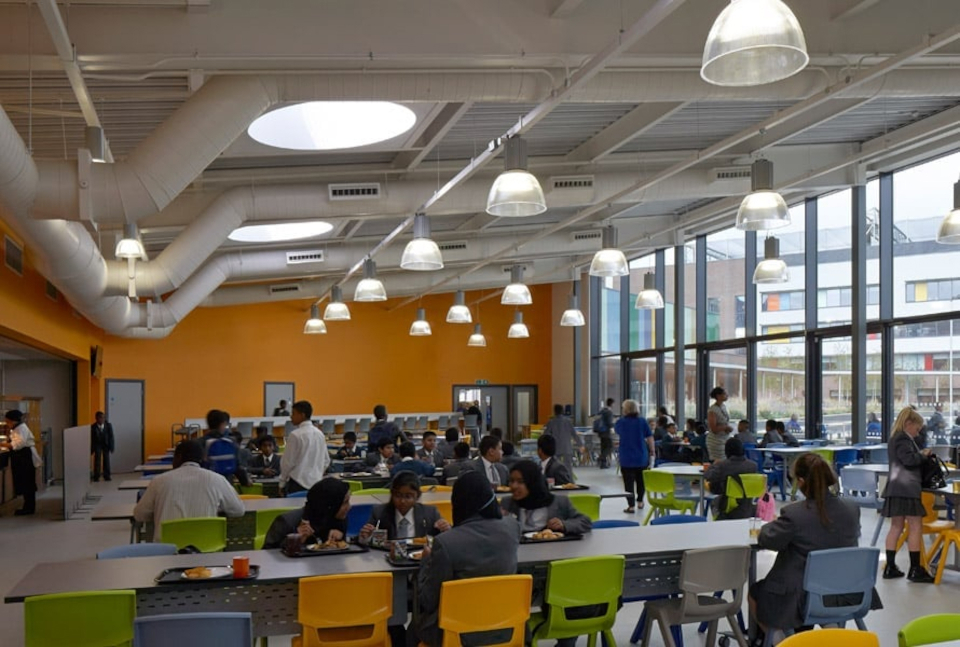
A young person’s experience of their school can shape them for life. The look and feel of the physical school environment is an important part of that experience and we take our responsibility to provide the best possible materials very seriously. We see ourselves as a key part of the education supply chain.
Better spaces for learning
We wholeheartedly endorse RIBA’s Better Spaces for Learning Report, published in 2016. With over 30 years experience of helping to write specifications for schools, we have seen firsthand the importance of good school design and its influence on the learning experience. We believe that:
Well-designed school buildings have a significant and positive impact on pupil behavior, engagement, wellbeing and attainment
Good school design has a positive impact on school staff’s productivity, with the most comfortable and well-designed schools demonstrating a 15% increase in productivity
Definition of “good” design in schools
Good quality, natural light, supported by good artificial lighting
Pupil sense of ownership. School design that creates dedicated social or self-directed learning spaces, incorporates child centred furniture and allows for the display of work or imagery pupils can identify with on the walls
Simple, natural ventilation systems
Thermal comfort and control over temperature
Optimum amount of colour in learning spaces
An optimum level of visual interest in terms of design
Flexible spaces
Good acoustics
Simple design that reduces reliance on complex mechanical systems
(Source: RIBA – Better Spaces for Learning (2016)
The importance of drylining systems
Partitions, wall linings, floor and ceiling systems play a key role in helping architects achieve the definition of good school design set out in RIBA’s Better spaces for learning report.
Getting the drylining system right is vital to meeting these design aspirations, helping to solve creative challenges such as how to create flexible spaces while still meeting or exceeding building performance targets like good acoustics.
Against a backdrop of limited funding available for schools, post-occupancy evaluations also show that choosing the right system can significantly improve the long-term experience of school buildings as well as reduce running and maintenance costs by offering, for example, improved thermal efficiency.
This is why Siniat has set out the key considerations for school drylining systems in a new guide to help designers and specifiers make informed decisions and create positive learning environments.
Siniat Drylining Specification Guide for education
Schools have unique drylining issues which Siniat has addressed in its new Drylining Specification Guide 2017 including:
- Acoustics – soundproofing and absorption
- Durability and impact resistance
- Mounting accessories, fixtures and fittings
- How to deal with tall interior walls in spaces such as assembly rooms and sports halls
- Special needs requirements
- Air quality and harmful additives
- Fire proofing, water proofing
- Sustainability considerations
- Thoughtful aesthetic design
The Guide is divided into eight sections, which covers a brief overview of the key regulations affecting schools, followed by the key challenges for specific rooms – assembly halls, atria, SEN rooms for instance – and how to solve them. It includes detailed insights into selecting partitions, absorbent linings/ceilings and systems for fire protection.
Selecting partitions in schools
Understanding the requirements of adjacent spaces is key to choosing the correct partition, and will help designers create more efficient layouts. It is also possible to build higher specification walls that give future flexibility to allow almost any room to neighbour another. The Guide shows you how to calculate the requirement for each partition, and the Siniat solutions to meet these requirements, indicating the relative benefits of each. It also includes robust details of these systems, alongside a fixings guide.
Selecting absorbent linings and ceilings
Specifiers also need to address reverberation issues, particularly prevalent in classrooms, corridors, atriums, assembly halls and communal areas. Reverberation can be overcome with sound absorbent plasterboards which are perforated in design and are able to absorb sound waves which help to deaden reverberant noise
Selecting systems for fire protection
Siniat’s solutions will help you meet the requirements of Approved Document B to protect life safety, but to also protect the fabric of the school building. In this section we help you choose relevant shaftwall and encasement systems, with accompanying robust details.
Order a free copy of the Drylining Specification Guide for Education
